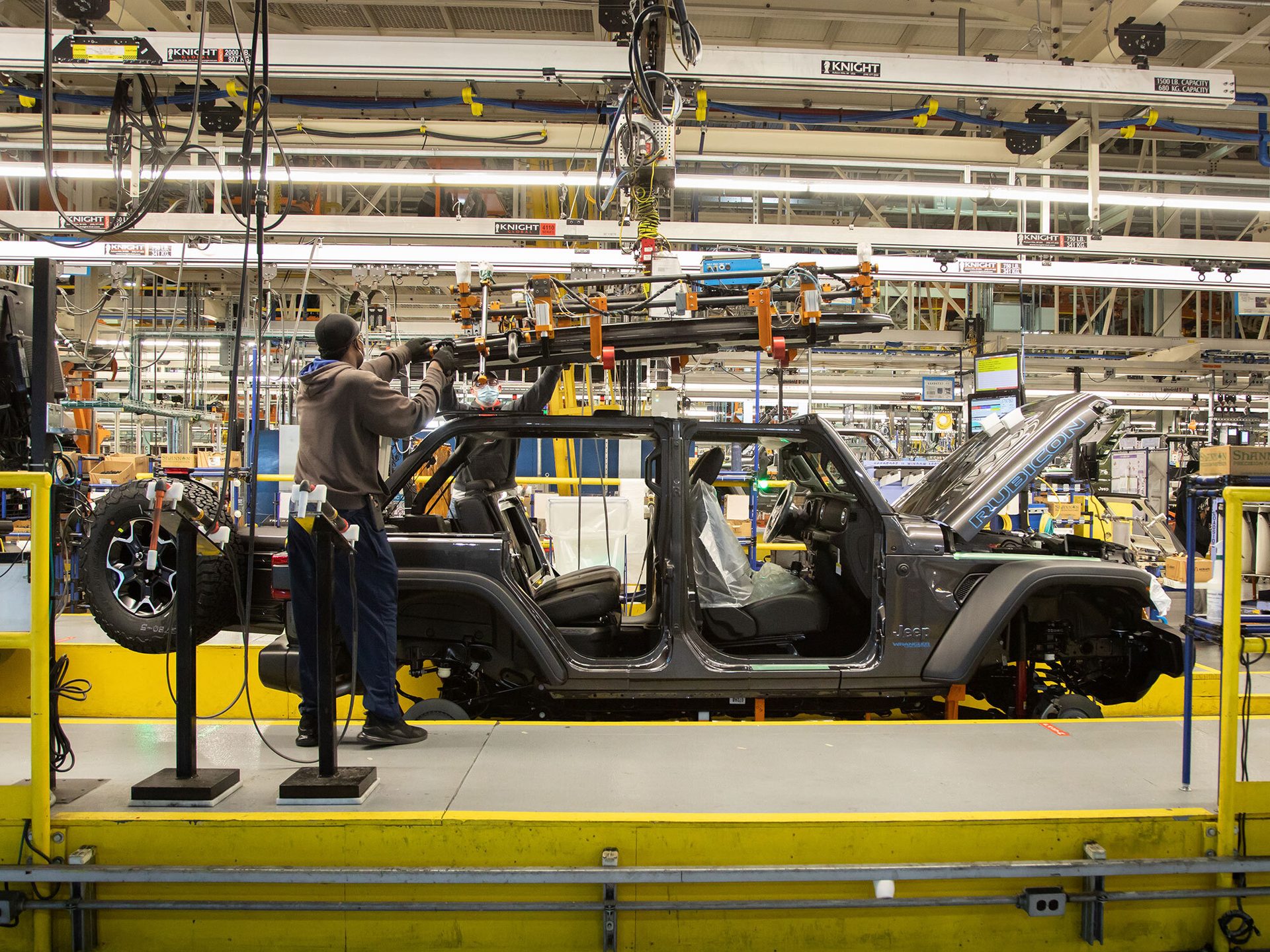EV Fast Chargers Pose Cybersecurity Risk
NEWS
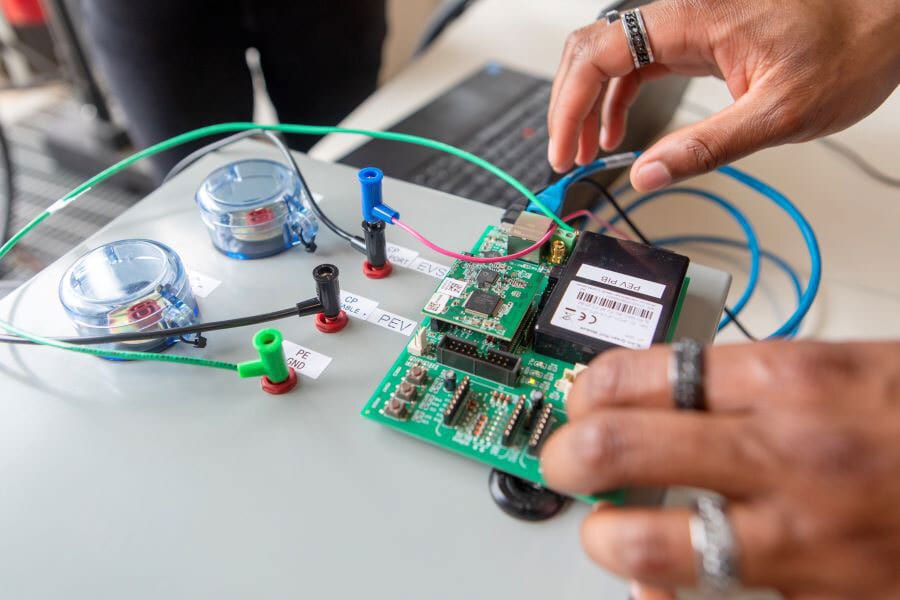
Engineers at Southwest Research Institute have identified cybersecurity vulnerabilities with electric vehicles using direct current fast-charging systems. Photo courtesy Southwest Research Institute
SAN ANTONIO—Engineers at Southwest Research Institute (SwRI) have identified cybersecurity vulnerabilities with electric vehicles using direct current fast-charging systems. The high-voltage technology relies on power line communication (PLC) technology to transmit smart-grid data between vehicles and charging equipment.
In a laboratory, the SwRI team exploited vulnerabilities in the PLC layer, gaining access to network keys and digital addresses on both the charger and the vehicle. The engineers found unsecure key generation present on older chips when testing, which was confirmed through online research to be a known concern.
“Through our penetration testing, we found that the PLC layer was poorly secured and lacked encryption between the vehicle and the chargers,” says Katherine Kozan, an engineer who led the project for SwRI’s High Reliability Systems Department.
The research is part of SwRI’s ongoing efforts to help the mobility sector and government improve automotive cybersecurity spanning embedded automotive computers and smart-grid infrastructure. It builds upon a 2020 project where SwRI hacked a J1772 charger, disrupting the charging process with a lab-built spoofing device.
In the latest project, SwRI explored vehicle-to-grid (V2G) charging technologies governed by ISO 15118 specifications for communications between EVs and electric vehicle supply equipment (EVSE) to support electric power transfer.
“As the grid evolves to take on more EVs, we need to defend our critical grid infrastructure against cyberattacks while also securing payments to charge EVs,” says Vic Murray, assistant director of SwRI’s High Reliability Systems Department. “Our research found room for improvements.”
The SwRI engineers developed an adversary-in-the-middle (AitM) device with specialized software and a modified combined charging system interface. The AitM allowed testers to eavesdrop on traffic between EVs and EVSE for data collection, analysis and potential attack. By ascertaining the media access control addresses of the EV and EVSE, the engineers identified the network membership key that allows devices to join a network and monitor traffic.
Autonomous Tandem Drift Sequence Improves Vehicle Safety

Autonomous tandem drifting simulates real-world where cars must respond quickly to other vehicles, pedestrians and cyclists. Photo courtesy Toyota Research Institute
LOS ALTOS, CA—Engineers at theToyota Research Institute (TRI) and Stanford University recently drifted two autonomous vehicles in tandem. The experiment was conducted at Thunderhill Raceway Park in Willows, CA, using a pair of modified Toyota GR Supra sports cars. Algorithms on the lead car were developed at TRI, while Stanford engineers developed those on the chase car.
Drifting refers to a motorsports maneuver where a driver precisely controls a vehicle’s direction after breaking traction by spinning the rear tires—a skill transferable to recovering from a slide on snow or ice. By adding a second car drifting in tandem, the engineers simulated dynamic conditions where cars must respond quickly to other vehicles, pedestrians and cyclists.
TRI engineers focused on developing robust and stable control mechanisms for the lead car, allowing it to make repeatable, safe lead runs. Stanford engineers developed artificial intelligence-based models and algorithms that enabled the chase car to adapt dynamically to the motion of the lead car so that it could drift alongside without colliding. By leveraging AI to constantly train the neural network using data from previous tests, the vehicles improved from every trip to the track.
“Our researchers came together with one goal in mind—how to make driving safer,” says Avinash Balachandran, Ph.D., vice president of TRI’s Human Interactive Driving division. “Now, utilizing the latest tools in AI, we can drift two cars in tandem autonomously.
“It is the most complex maneuver in motorsports, and reaching this milestone with autonomy means we can control cars dynamically at the extremes,” claims Balachandran. “This has far-reaching implications for building advanced safety systems into future automobiles.”
“The physics of drifting are actually similar to what a car might experience on snow or ice,” adds Chris Gerdes, Ph.D., a professor of mechanical engineering and co-director of the Center for Automotive Research at Stanford. “What we have learned from this autonomous drifting project has already led to new techniques for controlling automated vehicles safely on ice.”
In an autonomous tandem drifting sequence, two vehicles—a lead car and a chase car—navigate a course at times within inches of each other while operating at the edge of control. The engineers used state-of-the-art techniques to build the vehicle’s AI, including a neural network tire model that allowed it to learn from experience, much like an expert driver.
According to Balachandran, many car crashes are due to a loss of vehicle control in sudden, dynamic situations. “When your car begins to skid or slide, you rely solely on your driving skills to avoid colliding with another vehicle, tree or obstacle,” he explains.
“An average driver struggles to manage these extreme circumstances, and a split second can mean the difference between life and death,” says Balachandran. “This new technology can kick in precisely in time to safeguard a driver and manage a loss of control, just as an expert drifter would.”
GM to Retool Grand River Plant for EV Production
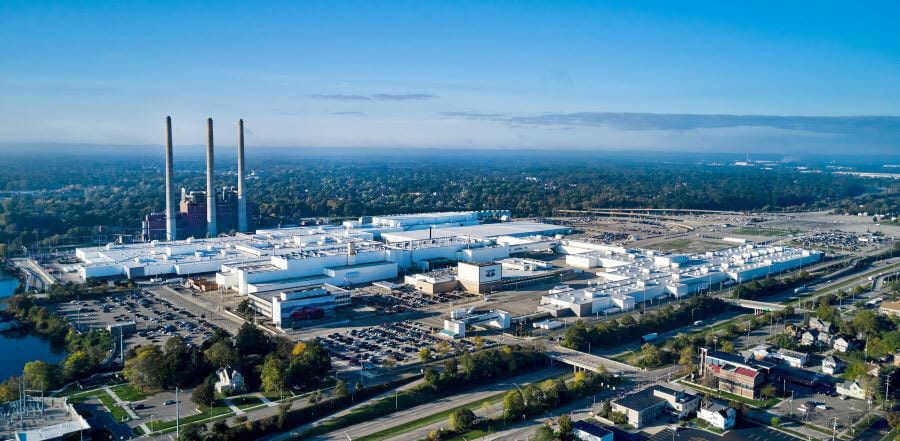
General Motors plans to retool its 22-year-old Lansing Grand River assembly plant to mass-produce electric vehicles. Photo courtesy General Motors
LANSING, MI—General Motors plans to convert its 22-year-old Lansing Grand River assembly plant to mass-produce electric vehicles. Part of the investment will be funded by a $500 million grant from the U.S. Department of Energy.
Lansing Grand River will join other GM plants in Michigan that have already gone electric, such as Factory ZERO Detroit-Hamtramck Assembly Center and Orion Assembly.
“GM’s investment and this Department of Energy grant underscore our commitment to U.S. leadership in manufacturing and innovation, making sure we’re competitive at home and abroad,” says Camilo Ballesty, vice president of North American manufacturing and labor relations at General Motors. “Our Lansing Grand River team produces incredible vehicles for our customers, and we’re proud to bring our commitment to performance and quality into our EV future.”
Since it opened in 2002, Lansing Grand River has produced gas-powered Cadillac sedans, such as the CT4 and CT5. The flexible facility was designed to be a showcase for lean manufacturing practices and was once hailed as a factory of the future.
See us at The ASSEMBLY Show, Booth 305.

NASCAR Unveils Battery-Powered Racer
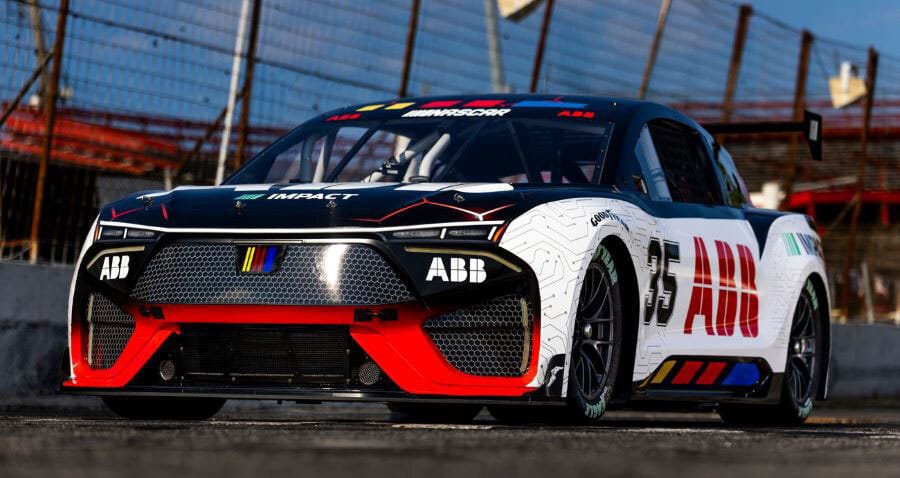
NASCAR has unveiled a battery-powered vehicle that it hopes to see competing on race tracks sometime in the near future. Photo courtesy NASCAR
CHICAGO—A traditional bastion of gas-powered adrenalin is going electric. In partnership with ABB, NASCAR has unveiled a battery-powered vehicle that it hopes to see competing on race tracks sometime in the near future.
The goal of the ABB NASCAR Electrification Innovation Partnership is to “push the boundaries of electrification technology.”
A prototype vehicle was recently developed in collaboration with NASCAR’s OEM partners—Chevrolet, Ford and Toyota — and was built by a team of engineers at the stock car racing series’ Research & Development Center in Charlotte, NC.
The track-tested EV features three STARD UHP 6-Phase motors (one front, two rear) supplying power directly to all four specially designed Goodyear tires. Anchored by a 78-kilowatt-hour liquid-cooled battery, the tunable power train can produce 1,000 kilowatts at peak power. Regenerative braking converts kinetic energy into power, making the car ideal for both road courses and short oval tracks.
The all-wheel drive car has a generic crossover utility vehicle body made of sustainable flax-based composite. Its body sits on a modified Next Gen chassis, while the steering, suspension, brakes and wheels all derive from the NASCAR Cup Series car.
“While [we are] committed to the historic role of the combustion engine in racing, [we’re] also committed to decarbonizing [our[ operations and reducing [our] carbon footprint to zero across core operations by 2035 through electrification and innovative solutions,” says Eric Nyquist, senior vice president and chief impact officer at NASCAR.
ABB is already active in Formula E racing, a 10-year-old international series for open-wheel racers.
Chinese Truck Company to Build Assembly Plant in Georgia
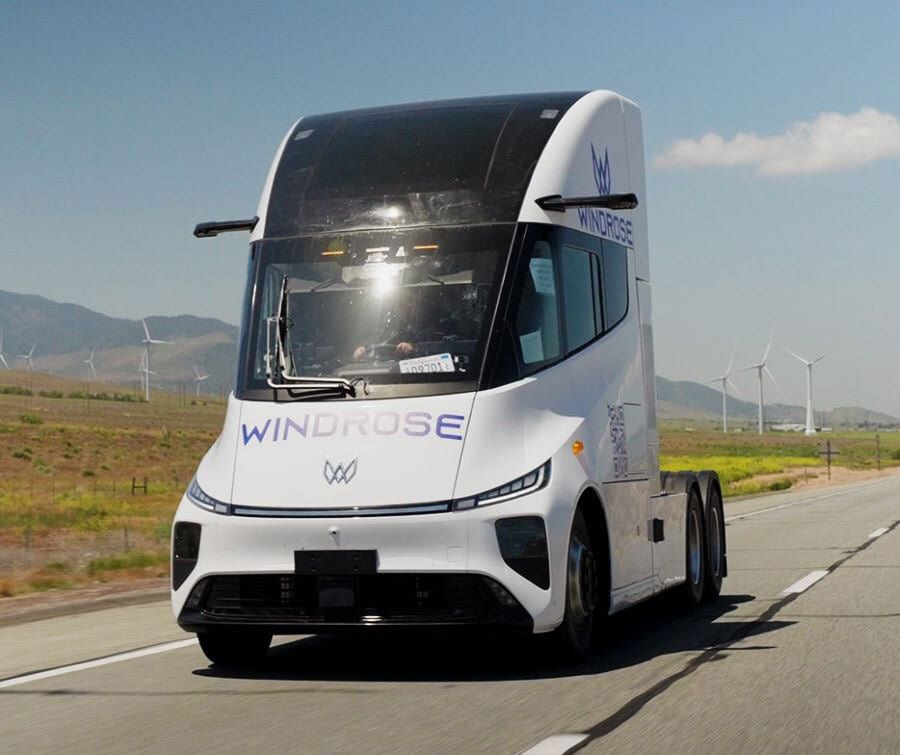
Windrose Technology plans to build an assembly plant in Georgia to mass-produce battery-powered Class 8 vehicles. Photo courtesy Windrose Technology
HONG KONG—Windrose Technology, a Chinese start-up, plans to build an assembly plant in Georgia to mass-produce battery-powered Class 8 vehicles. However, the vehicle appears to be a knockoff copy of Tesla’s heavy-duty truck.
According to Reuters, Windrose will compete directly with Tesla's Semi with a $250,000 price tag. The truck will feature a 700-kiolwatt-hour battery pack capable of operating more than 400 miles on a single charge fully loaded at 49 tons.
The Georgia factory will assemble vehicles from parts made in China. Windrose also plans to build a factory in Belgium to supply the European market.
The company expects to deliver its first batch of electric trucks in China next month and aims to produce more than 10,000 vehicles globally by the end of 2027. Manufacturing in China is being outsourced to Anhui Jianghuai Automobile Group and Higer Bus.
Ultrasound Helps Improve Autonomous Vehicle
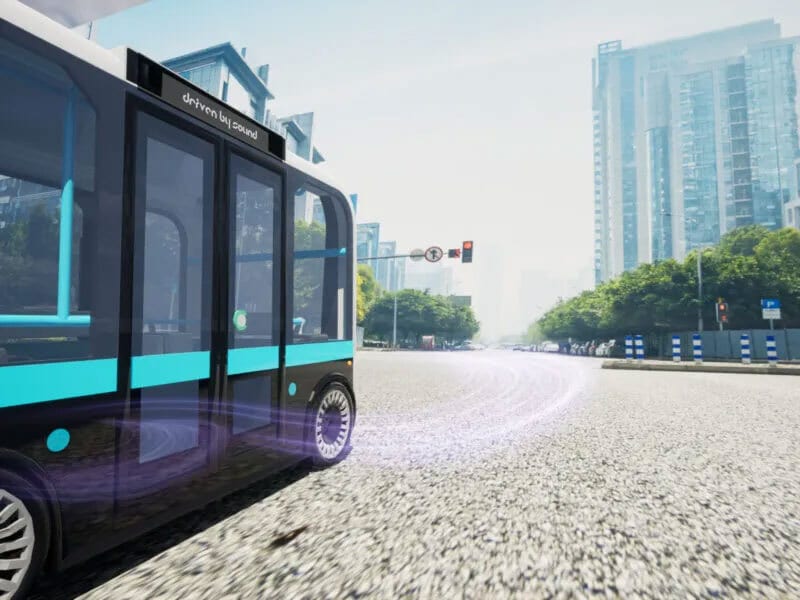
Ultrasound technology enables autonomous vehicles to detect their surroundings in 3D in real time. Illustration courtesy Calyo
CRANFIELD, England—Engineers at Cranfield University are partnering with Benedex Robotics and Calyo to create ultrasonic-based sensing technology for autonomous vehicles. The goal of the Driven By Sound project is to develop a functional safety sensing platform based on 3D ultrasound that is capable of operating effectively in even the most challenging environmental conditions.
The new technology allows autonomous vehicles to detect their surroundings in 3D in real time. It complements existing sensing and safety detection systems, providing an additional layer of safety and reliability.
The initiative combines Calyo's 3D ultrasound sensor technology, Calyo Pulse, Benedex’s safety platform expertise, and Cranfield University’s experience in integrating and testing autonomous road vehicles. The end product will provide a crucial redundancy mechanism for enhanced safety in autonomous vehicles. It will serve as a crucial redundancy mechanism, enabling vehicles to perform minimum risk maneuvers and safely stops in the event of a fault or severe road conditions.
“Safety has to be top of the agenda for autonomous vehicle development, and this exciting project will inform a robust solution to deal with extreme environmental conditions, one of the biggest technical challenges to the widespread availability of self-driving vehicles,” says Marco Cecotti, lecturer in driving automation at Cranfield Universit.
“By integrating this additional layer of functional safety, we are introducing innovation, which is transformative in the industry, while cost-effective and easy to implement, establishing the foundation for accessible safe and secure autonomous mobility,” adds Snir Benedek, CEO of Benedex Robotics.
The Driven By Sound project is expected to be completed in the first half of 2025, culminating in the demonstration of a vehicle prototype equipped with this technology at Cranfield University’s MUEAVI proving ground.
Volvo Cars Starts Electric SUV Production at U.S. Plant
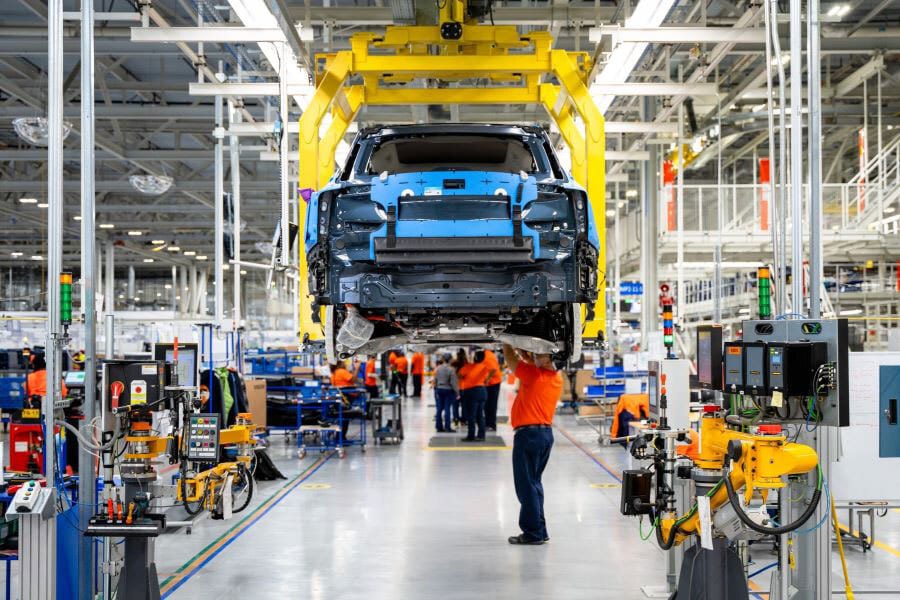
Volvo Cars is assembling its new flagship EV in Charleston, SC. Photo courtesy Volvo Cars
CHARLESTON, SC—Volvo Cars has started to produce its new flagship electric vehicle at its assembly plant here. The EX90 boasts a driving range of up to 300 miles.
“The fully electric EX90 is the start of a new era for [us]; a new era for safety, sustainability and human-centric technology,” says Jim Rowan, CEO of Volvo Cars. “The [vehicle] is proudly manufactured in the USA and reflects our long-term commitment to our people in South Carolina and the broader U.S. market.
“In recent years, we have made extensive investments in the facility,” explains Rowan. “The body shop and paint shop have been renewed and expanded significantly, while the plant now also has a state-of-the-art battery pack production line.
“The EX90 not only expands our portfolio of fully electric cars, but also represents a paradigm shift for the company as it is the first Volvo powered by core computing technology— technology that enables a new era of safety for our cars,” claims Rowan.
September 2024 | ASSEMBLYMAG.com


